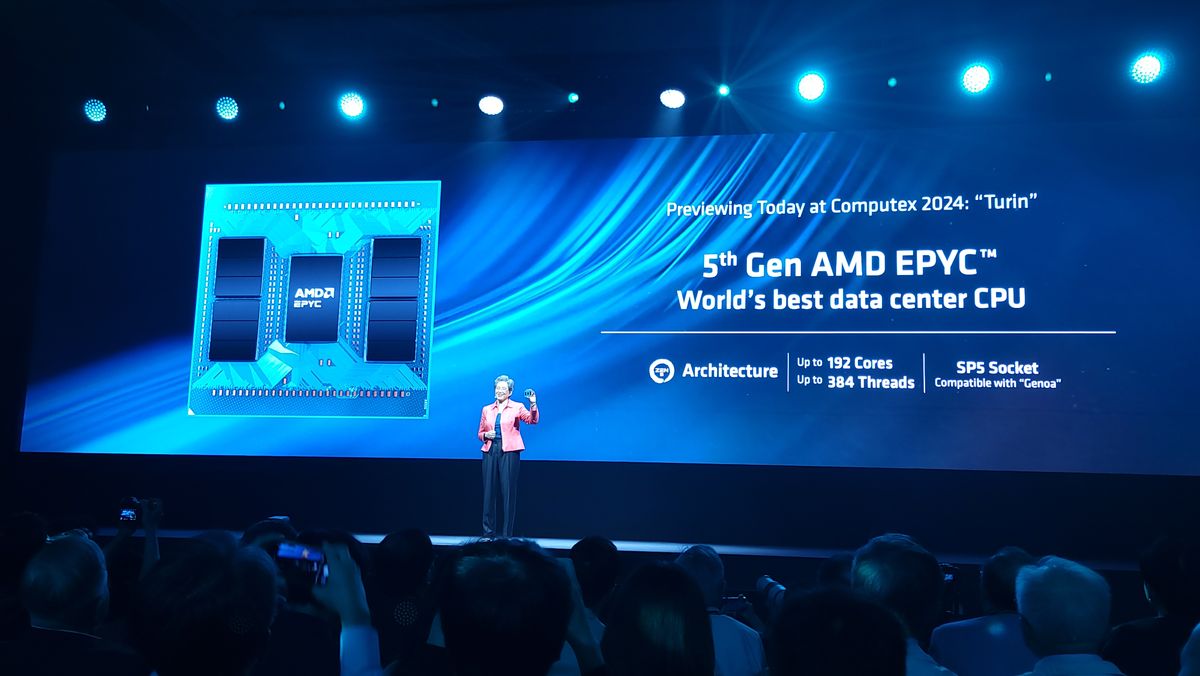I think they used the node performance to help with the significant implied perf/watt gain. The 12 core went from 170W TDP to 120W and both 6 and 8 cores dropped from 105W to 65W.
They did manage to maintain or slightly increase clocks while doing this (+100 for 12 and 16 cores). Likely we will also see higher sustained under load clocks in cooling limited scenarios.
Zen is the foundation for servers where perf/watt is way more important than peak clocks.
More architectural complexity also needs more Xtors to drive it resulting in more total leakage and more dynamic cap increasing power @iso process. Given how small the difference is between N5P-HPC to N4P-HPC, and with the clocks being where they are (TDP is a "we'll see" since intel and AMD always play loose with what a watt actually means), I think AMD prob did a good job to get the clock/power results they did with the enhancements they did to the core.
Zen 5 looks great on the power efficiency improvements front, but a little underwhelming for overall performance gains over Zen 4. AMD announcing support for AM5 to 2027+ is excellent though.
I did see AMD also put Apple and Qualcomm in their comparison charts. That was interesting marketing.
I have but one area of concern, and that is AMD closing the door on themselves. Given the historical cadence of one new arch every 2 years, and being slow on node transitions ever since they moved to TSMC; AMD is stuck on N4P until what late 2026 when they move to N3P? In the meantime they have to deal with intel, NVIDIA, and CSP chips on N3E/P and 18A(P) (to say nothing of the possibility of maybe having to deal with an M6 macbook in early 2026 on N2).
If AMD continues to insist on not putting in the correct pre-pays to have the volumes to take significant MSS or use the best node available, then I think the current rate of innovation might be too low. A couple examples of what I mean:
TGL vs Zen+ mobile low volume Zen2 mobile: Intel had a clean win vs main volume part and Zen2 mobile evened up performance but lost when it came to power consumption despite iso process.
ADL vs Zen3 + mostly Zen2 mobile: Intel mobile power draw was a disaster (gen on gen regression) despite superior process. On DT intel offered iso perf at iso power for lowend/midrange parts and higher perf at higher power for highend parts with a slight process lead.
RPL vs Zen4: Intel at same perf at higher power due to far superior TSMC process.
If even intel's design teams can often match or beat AMD at iso process, what happens as AMD falls far behind on process? Intel 3 is a superior process to N4P (for this application), intel is using lower pJ/bit packaging tech, and intel has core count parity/superiority. I wouldn't doubt that AMD has the better core, but it would seem that the comical lead AMD had on server looks like it is evaporating. And that is just the attack from above, the attack from below by the CSPs I think is an even bigger threat. AMD seems to have always been more dependent on DC than intel, and to make matters worse most of AMD's wins are from the CSPs. Presumably AMD has more to lose from system company chips than intel who has presumably already lost much of that market.
My opinion is that AMD thinks too small and relies too much on this we'll make a good core with a slow volume ramp and the sales will come to us (rather than taking the intel in laptop or Nvidia in DC strategy of co-system design with many partners). To be absolutely clear, this is NOT a sink the company level problem, but do think that a good chip will only carry you so far, and I think this mindset will inhibit their growth (especially with the wave of systems companies who want more than "just a good chip").
Party pooping over: As a consumer these things will be great if they are priced like the current Zen 4 prices, and having an NPU lead over LNL/QCOM might be a big differentiator especially when combined with their leading iGPU IP. The new laptop chip names are vile though. My jaw literally dropped when I saw it. I didn't think Core ULTRA could be topped, but here we...

 www.youtube.com
www.youtube.com






